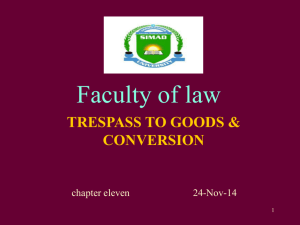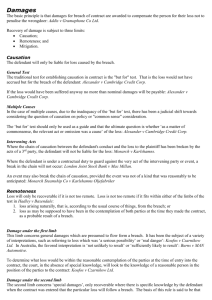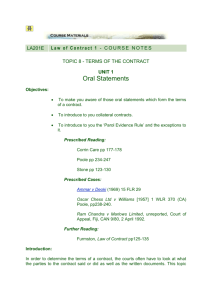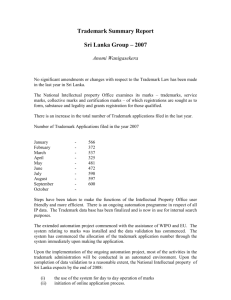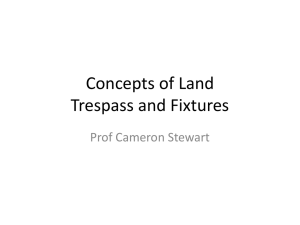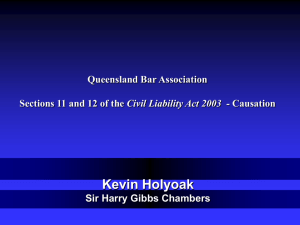Di Napoli v New Beach Apartments Pty Ltd
advertisement
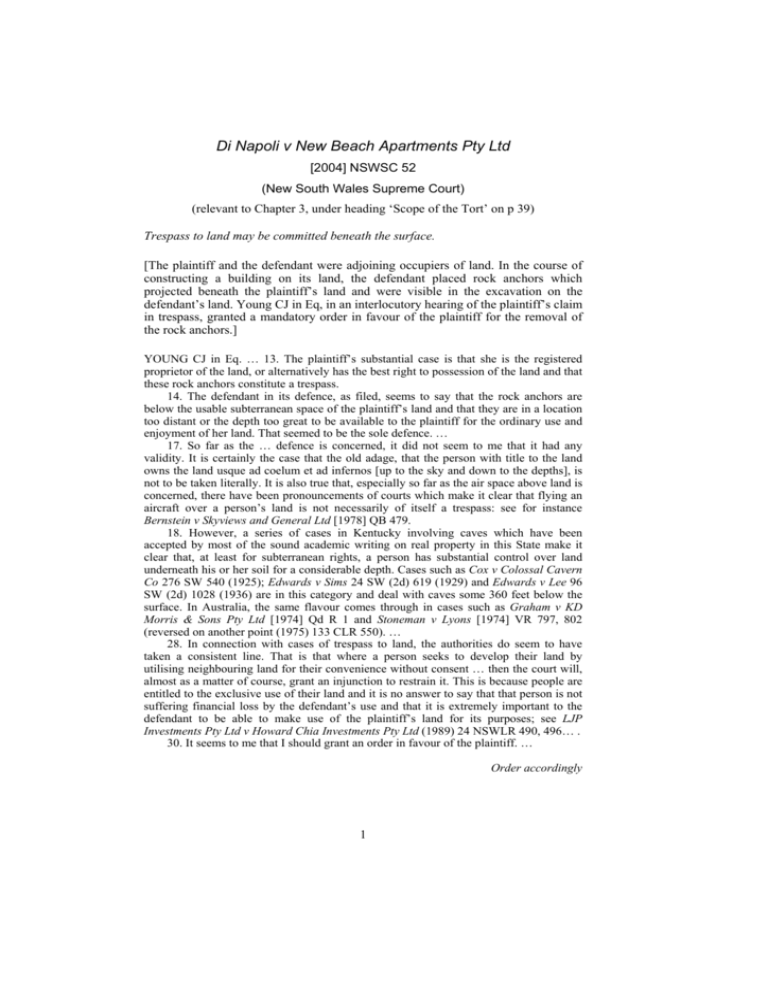
Di Napoli v New Beach Apartments Pty Ltd [2004] NSWSC 52 (New South Wales Supreme Court) (relevant to Chapter 3, under heading ‘Scope of the Tort’ on p 39) Trespass to land may be committed beneath the surface. [The plaintiff and the defendant were adjoining occupiers of land. In the course of constructing a building on its land, the defendant placed rock anchors which projected beneath the plaintiff’s land and were visible in the excavation on the defendant’s land. Young CJ in Eq, in an interlocutory hearing of the plaintiff’s claim in trespass, granted a mandatory order in favour of the plaintiff for the removal of the rock anchors.] YOUNG CJ in Eq. … 13. The plaintiff’s substantial case is that she is the registered proprietor of the land, or alternatively has the best right to possession of the land and that these rock anchors constitute a trespass. 14. The defendant in its defence, as filed, seems to say that the rock anchors are below the usable subterranean space of the plaintiff’s land and that they are in a location too distant or the depth too great to be available to the plaintiff for the ordinary use and enjoyment of her land. That seemed to be the sole defence. … 17. So far as the … defence is concerned, it did not seem to me that it had any validity. It is certainly the case that the old adage, that the person with title to the land owns the land usque ad coelum et ad infernos [up to the sky and down to the depths], is not to be taken literally. It is also true that, especially so far as the air space above land is concerned, there have been pronouncements of courts which make it clear that flying an aircraft over a person’s land is not necessarily of itself a trespass: see for instance Bernstein v Skyviews and General Ltd [1978] QB 479. 18. However, a series of cases in Kentucky involving caves which have been accepted by most of the sound academic writing on real property in this State make it clear that, at least for subterranean rights, a person has substantial control over land underneath his or her soil for a considerable depth. Cases such as Cox v Colossal Cavern Co 276 SW 540 (1925); Edwards v Sims 24 SW (2d) 619 (1929) and Edwards v Lee 96 SW (2d) 1028 (1936) are in this category and deal with caves some 360 feet below the surface. In Australia, the same flavour comes through in cases such as Graham v KD Morris & Sons Pty Ltd [1974] Qd R 1 and Stoneman v Lyons [1974] VR 797, 802 (reversed on another point (1975) 133 CLR 550). … 28. In connection with cases of trespass to land, the authorities do seem to have taken a consistent line. That is that where a person seeks to develop their land by utilising neighbouring land for their convenience without consent … then the court will, almost as a matter of course, grant an injunction to restrain it. This is because people are entitled to the exclusive use of their land and it is no answer to say that that person is not suffering financial loss by the defendant’s use and that it is extremely important to the defendant to be able to make use of the plaintiff’s land for its purposes; see LJP Investments Pty Ltd v Howard Chia Investments Pty Ltd (1989) 24 NSWLR 490, 496… . 30. It seems to me that I should grant an order in favour of the plaintiff. … Order accordingly 1




![[2012] NZEmpC 75 Fuqiang Yu v Xin Li and Symbol Spreading Ltd](http://s3.studylib.net/store/data/008200032_1-14a831fd0b1654b1f76517c466dafbe5-300x300.png)
